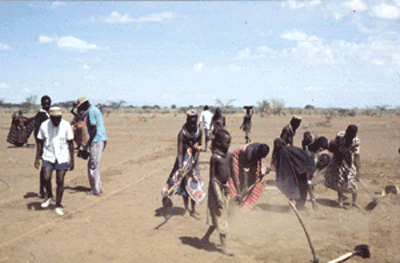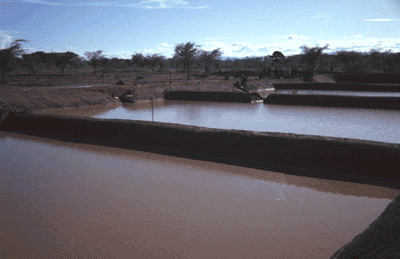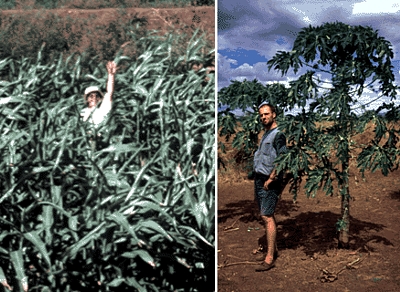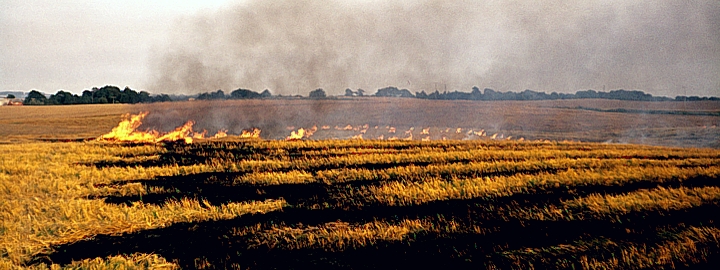 |
Terra Preta de Indio
Biochar Soil Management |
 |
Content: J. Lehmann
Host: Cornell University
Layout: V. Jauss
For optimal viewing:
This website is best viewed in a resolution of 1024 or higher, 32 bit color, and in Mozilla Firefox. Javascript, CSS and Tables.
|
 |
| © All original content belongs to Cornell University. This is a non-profit website for educational purposes that claims no ownership of copyright material. Other images and text belong to their respective owners. No copyright infringment intended. |
| |
| |
| |
|
Optimizing Agroforestry under Runoff Irrigation
- Experimental Evidence from Kakuma, Kenya |
| The following fotos and description of the construction of a runoff irrigation system are taken from a project which was conducted in Kakuma, Northern Kenya, from 1994 to 1997, with a follow-up study in 2000. |
| |

The dams to hold the water from runoff on the fields were built with the soil from the fields themselves. As important as a sufficient height of the dams is their slope and a thorough compaction of the soil. Small dams can be constructed with locally available tools such as hoes and buckets and can be compacted by trampling on every few centimeters which are added to the dam (see photo). |
| |

Earthen dams surrounding the fields effectively retained the water which came from runoff generated by a strong rainfall event. The irrigation water needed about one week until it infiltrated into the soil and the crops could be planted. The water wetted the soil to a depth of at least 3m, from where it is not easily lost by evaporation at the soil surface. The rainfall in these areas is very low (330 mm per year) and the evaporation is very high at a mean annual temperature of about 28C (8mm mean daily potential evapotranspiration). Without irrigation systems, rainfall can only moisten the first few centimeters of the soil. Using rainfed agriculture, a few hours after the rain stops, the soil is as dry as before the rain. |
| |

The yields of sorghum (see picture) and cowpea were considerable, papaya was bearing fruit after 6 months even in the hot and arid environment of Northern Kenya (more details on fruit trees). Crop production can be significantly improved with this irrigation system. However, for optimal production issues related to crop nutrition, to pests (termites, birds), and to its socio-economic viability have to be addressed. The results from these trials show that runoff irrigation is a feasible landuse technique for dry areas. |
| |
| The focus of the project was to determine the interactions of trees and crops as affected by pruning and planting density. The results can be found in the publications. |
|



